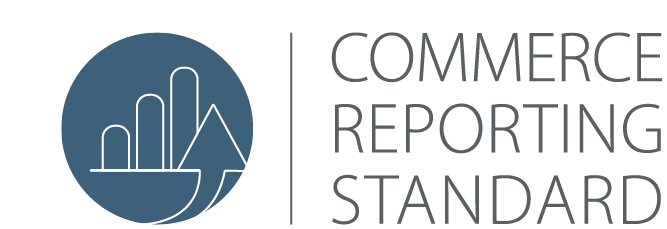The Commerce Reporting Standard will be the standard model for commerce organization to monitor and increase business performance in a data-driven way. Finally, it will provide a comprehensive system of metrics and attributes as well as KPI sets for different company types and full report templates for various commerce business roles. Learn more about project scope and phases on this page!
Project Scope
- Tailored to commerce businesses – brands and retailers
- Focused on B2C commerce
- Applicable to all sales channel models – online, brick and mortar, multi-/omni-channel etc.
- Limited to transaction-related processes – i.e. distinguished from corporate (financial) reporting
The motto: Included is what helps to improve business performance – monitor processes, measure success, discover potential!
Project Phases
The project will go through several phases until we have the final Commerce Reporting Standard as a result. Nevertheless, all partial results will be published during the course of the project, so organizations will be able to work with what has been achieved from day 1 on.
- Phase 1: Develop a comprehensive, consistent system of commerce metrics and attributes
- Phase 2: Define a basic set of key performance indicators (KPIs) from the full metrics portfolio – tailored to company type and stage
- Phase 3: Define role-specific report templates for strategic and operational purposes
Scope Overview: Metrics
The Commerce Reporting Standard will cover the metrics clusters that are shown in the figure. The definition and systematization of the associated metrics will take place cluster by cluster – starting with the core of all commerce reporting: transaction metrics.
Transaction Metrics
All metrics that model and measure transactional performance: revenues, margins, discounts, fees, cancellations, returns etc.
Journey & Acquisition Metrics
All metrics that are related to customer journeys and/or acquisition: click-throughs, costs per click/t impressions, number of touchpoints etc.
Customer Metrics
All metrics that are directly related to the customer(s): lifetime values, interpurchase times, distribution of new/existing customers etc.
On-Site & Funnel Metrics (mainly online)
All metrics that model the buying funnel between acquisition and conversion: time on site, product views, conversions at various stages, bounces etc.
Product Metrics
All metrics that are directly related to the product(s): sell-through, predicted sales, days since last purchase, deviations from competitor prices etc.
Operations Metrics
All metrics that are related to purchasing, inventory and fulfillment: inventory turnover, purchase order quantities, open shipments etc.
Scope Overview: Entities & Attributes
Besides the needed metrics, the Commerce Reporting Standard will also define the entities and attributes that should be available for reporting and analytics purposes. Only by drilling down or aggregating metrics to those entities and attributes can companies gain full business insight.


